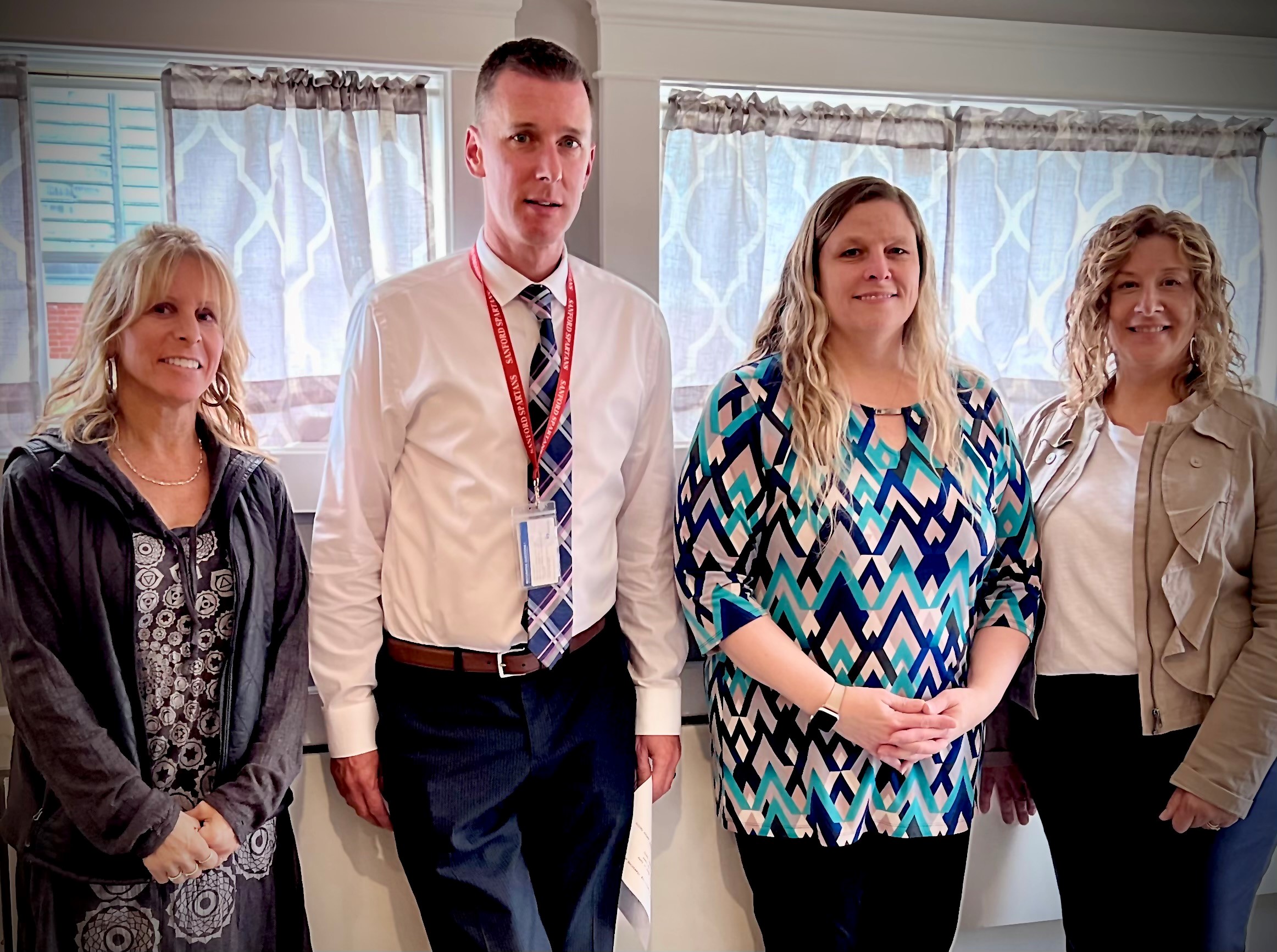Alliance Seeks Help, Hosts for Unhoused Youth
- May 17th 2024
- City NewsClubs & Organizations

From left: Cecilia Siriani, Steve Bussiere, Cyndy Pattershall and Carrie Hathaway
Photo: Barbara Crider
By Barbara Crider
A newly formed group of residents has started looking for ways to address a disturbing surge in the number of students in town who lack safe and stable housing. The Sanford Community Youth Alliance, an initiative of Strategies for a Stronger Sanford, is bringing together community leaders, educators and people who work in the area to recruit, vet and train host families.
Those who attended a meeting May 9 at the Nasson Little Theatre learned that Sanford has never seen so many students who don’t have a safe place to call home. According to Steve Bussiere, Assistant Superintendent of Schools, that description fits 200 students this academic year. Federal law defines housing instability, or homelessness, as “lacking a fixed, regular, and adequate nighttime residence.” The same law, the McKinney-Vento Homelessness Assistance Act, requires all schools to gather data on their student’s housing-related status.
Students who have to worry about whether they will have a safe place to sleep on any given night struggle with school attendance and completing schoolwork. Many of them miss opportunities to participate in extra-curricular activities like sports or music, which for most students are an important part of learning. And many are missing the opportunity to just be kids, to hang out with friends and enjoy growing up.
Cyndy Pattershall, the Alliance’s coordinator, explained to those in attendance at the meeting that the biggest current need is for individuals and families to host a displaced student.
Potential hosts complete an application with the Alliance and undergo a background check. Once they’re processed, the school department matches a potential host with an interested student and sets up a meeting where the parties can get to know each other and to discuss expectations. For example, some hosts may have a curfew or ask the student to pitch in on household chores. Placements only occur when both the student and the host believe, after meeting, that the fit is a good one.
Sanford School Outreach Worker Cecilia Siriani explained that while some of the students can be challenging to work with, their needs do not rise to a level that requires professional intervention that they might get, for instance, in a therapeutic foster home. The target students the Alliance is working with are not those who have been legally separated from their parents and are part of the child protective system.
Students and their families can lose housing for any number of reasons, and some find themselves having to sleep in a car or other place not intended as housing. Some students need stable housing only for a short time, for example while their parents search for a new apartment. Other placements may be longer term, depending on individual circumstances.
At the meeting, Carrie Hathaway described how she and her husband, Troy, have welcomed a student into their home through this project. Hathaway said she has learned a great deal about the resilience of kids facing adversity, and she feels that through their involvement, her family is “affirming youth and affirming humanity.”
A February 2024 study published by the Urban Institute detailed the negative long-term impact of homelessness on children. “Stable housing is a key facilitator of academic success for students of all ages, and the lack of stable housing can create major disruptions to learning for students,” the report said.
To learn more about the Sanford Community Youth Alliance, and to find out how to help local students in need of stable housing, contact sanfordcommunityyouthalliance@gmail.com. Those unable to host a student can still make a difference by donating items or making a financial contribution. Donations can be mailed to Strategies for a Stronger Sanford, with checks payable to SFASS, at P. O. Box 561, Sanford, ME 04073.






